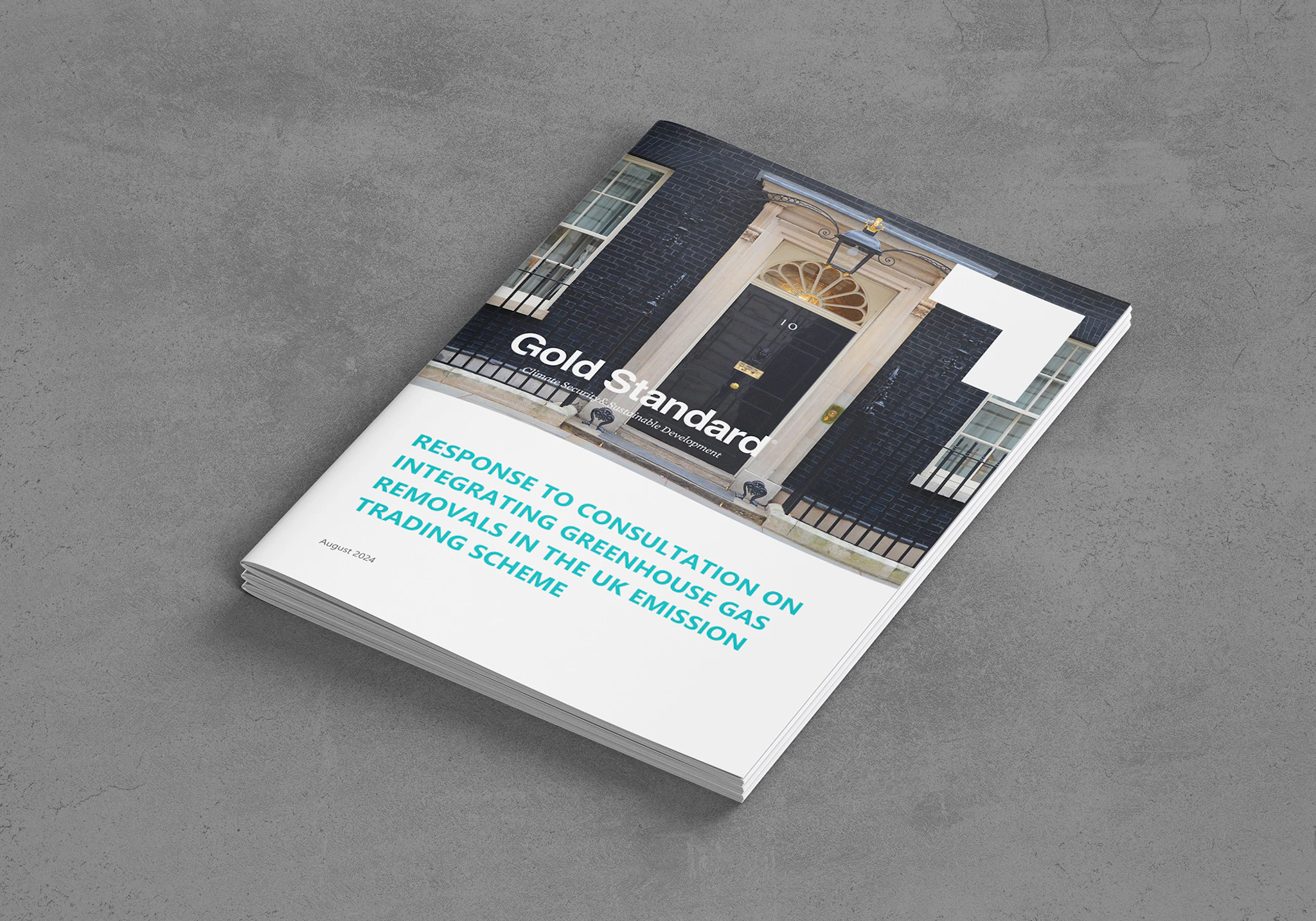Two of the most important trends in the international carbon market over the coming decades will be the growth of credits representing carbon removals, and the increased convergence between compliance and voluntary carbon markets.

In the first half of this year, we have seen two important milestones that bring together both trends.
In April, the European Council and the European Parliament reached provisional agreement on the EU’s Carbon Removals and Carbon Farming Certification Framework (CRCF), set to create the first EU-wide framework for certifying carbon removals, carbon farming and carbon storage in products across Europe.
The following month, the UK Government opened a consultation on the integration of greenhouse gas removals in the UK Emissions Trading Scheme.
Gold Standard responded to the UK Government’s consultation and has provided evidence to the European Commission to support the implementation of its framework. Across both policy developments, our key recommendations are as follows:
Draw on established carbon market foundations, rather than starting from scratch.
- As the EU intends to do through the CRCF, we believe policymakers can promote both integrity and administrative efficiency by recognising existing high-quality standard bodies for the certification of carbon removals. Doing so also provides an easier route for credits to be sold across different markets, whether voluntary or compliance-based.
Follow international best practice in the design of GHG removal methodologies and requirements.
- Quality criteria adopted by policymakers should align with market best practices, such as those emerging for the UNFCCC’s Article 6.4 mechanism. There are positive signs for this in the EU through the CRCF’s "QU.A.L.ITY" criteria, to ensure GHG removals are accurately quantifiable, additional, long-term (durable), and sustainable. Particularly with respect to ensuring long-term storage, it will be important for the UK government to establish a framework which covers a minimum storage period, liability measures, and fungibility measures, learning lessons from best practice in the voluntary carbon market, for example through buffer pools, where a percentage of issued credits are aggregated into a central pool to compensate for any reversals.
Introduce safeguards and incentives to avoid a race-to-the-bottom.
- It is likely that a company purchasing carbon credits for compliance purposes will be driven primarily by price, seeking the lowest-cost credits deemed eligible by the regulator. This risks tilting the playing field against smaller projects, those implementing newer and higher-cost technologies, or projects delivering deeper (and more costly) co-benefits – all of which we assume it is in the interest of governments to promote. We encourage regulators to reflect this in the design of their frameworks, whether through the eligibility criteria that they apply, or other incentives or nudges provided to buying companies.
Protect the integrity of compliance markets and the incentive to decarbonise.
- Gold Standard welcomes proposals by the UK to integrate greenhouse gas removals into the UK ETS to provide flexibility and create a reliable demand signal for forest-based and other activities. It is important to learn from past examples of the acceptance of credits within cap-and-trade systems, and to ensure integration is implemented in a way that neither reduces the incentive for covered entities to invest in deep decarbonisation, nor undermines the effectiveness of the system as a whole.
Gold Standard welcomes new frameworks and incentives for the generation of greenhouse gas removals, and the acceptance of these removals into compliance markets – assuming the right safeguard are in place. On our part, we continue to introduce new methodologies to support the generation of greenhouse gas removals credits under Gold Standard, including carbon dioxide removal (CDR) through geological storage and carbon mineralization. We will also be publishing new Activity Requirements for Engineered CDR for public consultation in the coming weeks, as well as an update to Gold Standard’s carbon mineralization methodology and a tool for calculating reversal risks from geological storage.
At the same time, we cannot lose focus on the urgent need to scale up the reduction of emissions across the world, and the role of carbon markets in financing this transition. As new frameworks and mechanisms are established to support greenhouse gas removals - and exclusively domestic removals in the case of the UK and the EU - we urge governments and companies to preserve and enhance efforts to reduce emissions where finance is needed most. Enabling access to renewable electricity, clean cooking and safe water; implementing more sustainable agricultural practices globally; phasing out coal-fired power; and reducing methane from landfill sites to name just a few examples. As we said three years ago, let’s remove only what we cannot avoid.
